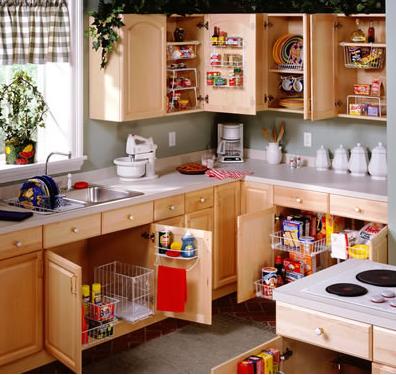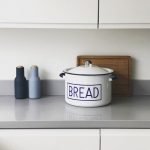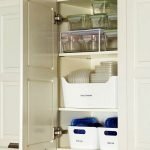
How Cluttered Is Your Kitchen?
This guest blog was created by Jo Hall from Less is More. Here you will find some incredibly useful hints and tips about creating and keeping a clutter free kitchen. I’ve already made a few tweaks that make my kitchen feel like a much happier and calmer place to be.
The Quick Fix?
Twenty minutes to get out of the door on a weekday morning, still not dressed, pets not fed, lost trainers and still wondering what to put in the packed lunches? You decide on lunch, only to find that the packet of roast chicken slices that you were relying on from your fridge, is a week past it’s use by date and you can’t find a matching lid for your water bottle. Looks as though it’s a cheese sandwich again and in order to quickly pad things out, you reach for the pre packaged snacks, promising yourself that tomorrow will be different…
Does any of this this sound familiar?
Clutter Linked to Unhealthy Eating
“An Australian-U.S. study conducted by Lenny Vartarian et al (2017) showed that people will actually eat more cookies and snacks if the environment in which they’re offered a choice of foods is chaotic, and they’re led to feel stressed. When the experimental kitchen in which participants were tested was disorganised and messy, and they were put in a low self-control mind set, students in the Cornell University lab ate twice as many cookies as those in a standard, non-chaotic kitchen. In other words, you’ll reach more for the sweets in a cluttered setting when you’re feeling out of control. – Psychology Today
What a Waste!
The Waste and Resources Action Programme (wrap), claim that the amount of household food waste (edible parts of food that could have been eaten) was 5.0 million tonnes and worth an estimated 15 billion pounds in the UK in 2015.
Single use packaging continues to be a huge and ever growing issue. According to Defra” Despite 71.4% of UK packaging waste being recycled, the amount sent to landfill has increased by an extra 446,000 tonnes sine 2013 – a 15% increase. – Plastics and Packaging: The UK’s waste mountain in charts.
Having a clutter free, well organised kitchen can take you from chaos to calm in your lunchbox preparation and help you play your part in reducing both food and packaging waste, here’s how:
Clutter free food cupboards – check use by dates and dispose of any out of date food items. If you have items which will go out of date soon, either plan meals to use them up straight away, donate them to a food bank if you don’t think you’ll use them, or store them near the front, so that you can see them easily and they won’t be forgotten again. Use baskets, and trays to divide the space in your cupboards, arranging all produce in such a way that everything can be seen easily. If you can easily see what you already have when you create your shopping list, you are less likely to buy multiples of the same product, this in turn means that food is less likely to remain past it’s use by date and be wasted.
 Logical layout – think about organising your kitchen so that the layout matches your needs, this will help you to find what you need quickly and save you time. For example lunchbox and other packed lunch equipment stored near the fridge, mugs and hot drink preparation items near the kettle, crockery stored near the dishwasher so that it can be unloaded quickly without you having to walk to the other side of the kitchen to put things away.
Logical layout – think about organising your kitchen so that the layout matches your needs, this will help you to find what you need quickly and save you time. For example lunchbox and other packed lunch equipment stored near the fridge, mugs and hot drink preparation items near the kettle, crockery stored near the dishwasher so that it can be unloaded quickly without you having to walk to the other side of the kitchen to put things away.
Taming the Tupperware (and other lunchbox equipment) –
 Pull it all out on one surface so that you can see what you’ve got all in one place (boxes, thermal food containers, flasks, coffee mugs, drinking bottles, lunch boxes, cutlery, insulating packs and ice blocks). Is anything broken? What do you actually use? How many of each item do you need (including a spare). Keep only what you use regularly and is efficient in doing it’s job.
Pull it all out on one surface so that you can see what you’ve got all in one place (boxes, thermal food containers, flasks, coffee mugs, drinking bottles, lunch boxes, cutlery, insulating packs and ice blocks). Is anything broken? What do you actually use? How many of each item do you need (including a spare). Keep only what you use regularly and is efficient in doing it’s job.
If you organise food containers so that similar shapes are stacked inside each other, with lids stacked separately within a container, you will be able to spot corresponding lids quickly, without having to rummage through the whole drawer.
Consider your usage of “single use plastic”, could you be decanting things into food containers and/or using bowls with beeswax wraps or reusable “stretch to fit” food covers instead of covering with cling film? Swap to paper sandwich bags instead of plastic.
Weekly fridge audit – make a habit of checking through your fridge at the weekends, discarding the things that are past their best and making a mental note to use things that need eating up. Doing this before planning your next weekly shop will help to reduce waste.
Check food freshness and find out how to store optimally with StillTasty.com Group items by category in your fridge (dairy, vegetables, leftovers) and make your most used items the easiest to access. Love Food Hate Waste gives recipes ideas for using up leftovers
Kitchen gadgets – these seem like a good idea at the time, but twelve months on do you actually use them? If you use something regularly (more than once a week) you might want to give it a place on your work surface, if not think about storing it in a cupboard. The clearer your kitchen surfaces are, the more room you will have for food preparation (and space to think!). If there is a gadget that you haven’t used in the last year, set yourself the challenge of using it again within the next month and if you haven’t done so within that time, or you decide that “making ice cream” isn’t for you, let it go.
Always use a shopping list & avoid bulk purchasing – have a shopping list pinned to your fridge, or painted as a blackboard on a door. Keep it somewhere that is easy for people to add items. Encourage all family members to jot things down on the list as food items run out. Guesswork at the supermarket leads to duplication and in turn waste. Bulk purchases are tempting from a cost saving perspective but unless it is an item that you genuinely use a lot of, resist. Ask yourself if you will be able to consume it before the expiry date and if you have room to store it. Be cautious about buying snack foods in bulk, the more food you store, the more you and your family will be tempted to consume.
 Meal Planning – once you have an organised kitchen it’s easy to take the next step towards thinking about meal planning. Buying only what you need, when you need it cuts down on food waste. If you are able to confidently prepare packed lunches from scratch this will cut down on the amount of pre packaged items you buy and therefore reduce packaging waste. Set aside time at the weekend to plan lunches for the week ahead and from that create your shopping list. Make a list of your favourite Lunchbox menu ideas and plan them on a two or three week rotation. Getting into the habit of doing this will save you so much time on a daily basis as you won’t have to decide what to make at the last minute (and use up precious time hunting for ingredients). Planning ahead will also help to ensure that you have the variety you need in your diet and the prevent boredom from resorting to the same quick fix every day.
Meal Planning – once you have an organised kitchen it’s easy to take the next step towards thinking about meal planning. Buying only what you need, when you need it cuts down on food waste. If you are able to confidently prepare packed lunches from scratch this will cut down on the amount of pre packaged items you buy and therefore reduce packaging waste. Set aside time at the weekend to plan lunches for the week ahead and from that create your shopping list. Make a list of your favourite Lunchbox menu ideas and plan them on a two or three week rotation. Getting into the habit of doing this will save you so much time on a daily basis as you won’t have to decide what to make at the last minute (and use up precious time hunting for ingredients). Planning ahead will also help to ensure that you have the variety you need in your diet and the prevent boredom from resorting to the same quick fix every day.
Turn food preparation into a pleasurable ritual rather than a time consuming chore.
For more ideas and to find out about Jo’s work visit her Website, her Facebook Page and her Blog
